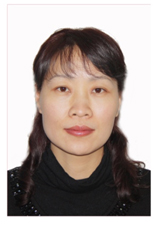Review of Research on “Powdery Rust” of Ancient Bronze Ware

摘 要
古代青铜器在长期的埋藏和保存过程中发生了各种腐蚀,其中的“粉状锈”会对青铜器造成严重破坏。围绕古代青铜器的合金组分、铸造工艺及赋存环境等因素,总结了古代青铜器“粉状锈”的成因,介绍了“粉状锈”的类型,分析了“粉状锈”发生发展的主要影响因素,并对青铜器“粉状锈”病害的重点研究方向进行了展望。
 粉状锈
粉状锈  腐蚀病害
腐蚀病害  ancient bronze
ancient bronze  powdery rust
powdery rust  corrosion damage
corrosion damage 
Abstract
In the process of long-term burial and preservation, ancient bronzes suffer from various kinds of corrosion, among which “powdery rust” causes serious damage to bronzes. Focusing on the factors such as alloy composition, casting technology and occurrence environment of ancient bronzes, the causes of “powdery rust” of ancient bronzes were summarized, the types of “powdery rust” were introduced, the main influencing factors of the occurrence and development of “powdery rust” were analyzed, and the key research directions of “powdery rust” disease of bronzes were prospected.
中图分类号 K876.42 DOI 10.11973/fsyfh-202301009
所属栏目 试验研究
基金项目 国家重点研发计划项目(2020YFC1522000)
收稿日期 2022/3/12
修改稿日期
网络出版日期
作者单位点击查看
引用该论文: CHEN Jiachang,MAI Ying,SHANG Zeya,CHEN Liwei,HUANG Xia. Review of Research on “Powdery Rust” of Ancient Bronze Ware[J]. Corrosion & Protection, 2023, 44(1): 51
共有人对该论文发表了看法,其中:
人认为该论文很差
人认为该论文较差
人认为该论文一般
人认为该论文较好
人认为该论文很好






参考文献
【1】国家文物局. 可移动文物病害评估技术规程金属类文物:WW/T 0058-2014[S]. 北京:文物出版社,2014.
【2】程德润,赵明仁,刘成,等. 古代青铜器"粉状锈"锈蚀机理新探[J]. 西北大学学报(自然科学版),1989,19(1):30-38.
【3】冯丽婷,苏畅,冯绍彬,等. 粉状锈对青铜器腐蚀影响的电化学研究及其形成机理[J]. 材料保护,2010,43(11):14-16,52,78.
【4】董少华,杨军昌,束家平,等. 显微红外光谱透射法快速鉴别"粉状锈"[J]. 文物保护与考古科学,
【5】GETTENS R J. The corrosion products of an ancient Chinese bronze[J]. Journal of Chemical Education,1951,28(2):67.
【6】(美)大卫·斯考特著. 马清林,潘路等译. 艺术品中的铜和青铜[M]. 北京:科学出版社,2009.
【7】王煊. 三星堆青铜器"酥粉锈"腐蚀机理的研究与探讨[J]. 四川文物,2002(3):83-89.
【8】潘路,冯耀川. 综述青铜病的化学问题和相对湿度的影响作用[J]. 中原文物,1994(1):71-79.
【9】张玉忠. "青铜病"的机理及防治方法研究[D]. 北京:北京化工大学,2000.
【10】BOZZINI B,ALEMÁN B,AMATI M,et al. Novel insight into bronze disease gained by synchrotron-based photoelectron spectro-microscopy,in support of electrochemical treatment strategies[J]. Studies in Conservation,2017,62(8):465-473.
【11】冯绍彬,胡芳红,冯丽婷. 青铜器腐蚀研究现状[J]. 腐蚀与防护,2009,30(1):7-10,45.
【12】SCOTT D A. Bronze disease:a review of some chemical problems and the role of relative humidity[J]. Journal of the American Institute for Conservation,1990,29(2):193-206.
【13】MARTENS W,FROST R L,KLOPROGGE J T,et al. Raman spectroscopic study of the basic copper sulphates-implications for copper corrosion and 'bronze disease'[J]. Journal of Raman Spectroscopy,2003,34(2):145-151.
【14】李晓东,张永琦,安梅梅. 出土青铜文物的腐蚀与常见缓蚀剂应用研究综述[J]. 天水师范学院学报,2013,33(5):7-10.
【15】范崇正,王昌燧,王胜君,等. 青铜器粉状锈生成机理研究[J]. 中国科学(B辑化学生命科学地学),1991,21(3):239-245,337.
【16】ODDY W A,HUGHES M J. The stabilization of 'active' bronze and iron antiquities by the use of sodium sesquicarbonate[J]. Studies in Conservation,1970,15(3):183-189.
【17】WANG T R,WANG J L,WU Y Q. The inhibition effect and mechanism of l-cysteine on the corrosion of bronze covered with a CuCl patina[J]. Corrosion Science,2015,97:89-99.
【18】BRINCH MADSEN H. A preliminary note on the use of benzotriazole for stabilizing bronze objects[J]. Studies in Conservation,1967,12(4):163-167.
【19】MACLEOD I D. Conservation of corroded copper alloys:a comparison of new and traditional methods for removing chloride ions[J]. Studies in Conservation,1987,32(1):25-40.
【20】CHASE T. Chinese bronzes:casting,finishing,patination and corrosion[C]//Ancient and Historic Metals. California:The Getty Conservation Institute,1994:33-50.
【21】周浩,祝鸿范,蔡兰坤. 青铜器锈蚀结构组成及形态的比较研究[J]. 文物保护与考古科学,2005,17(3):22-27.
【22】SCOTT D A. Periodic corrosion phenomena in bronze antiquities[J]. Studies in Conservation,1985,30(2):49-57.
【23】ROBBIOLA L,BLENGINO J M,FIAUD C. Morphology and mechanisms of formation of natural patinas on archaeological Cu-Sn alloys[J]. Corrosion Science,1998,40(12):2083-2111.
【24】CONSTANTINIDES I,ADRIAENS A,ADAMS F. Surface characterization of artificial corrosion layers on copper alloy reference materials[J]. Applied Surface Science,2002,189(1/2):90-101.
【25】李冰洁,江旭东,潘春旭. 铜锡青铜合金腐蚀过程中的电化学与微结构特征研究[J]. 材料导报,2017,31(11):138-143.
【26】MEEKS N D.Tin-rich surfaces on bronze-some experimental and archaeological considerations[J]. Archaeometry,1986,28(2):133-162.
【27】周剑虹. 青铜腐蚀与埋藏环境关系的初步研究[D]. 西安:西北大学,2006.
【28】王昌燧,袁玫,熊永红. 青铜合金成分与粉状锈的生成[J]. 中国科学技术大学学报,1995,25(4):448-453.
【29】SCOTT D. Metallography and microstructure in ancient and historic metals[M]. Los Angeles:Getty publications,1992.
【30】KAREEM K,SULTAN S,HE L. Fabrication,microstructure and corrosive behavior of different metallographic tin-leaded bronze alloys part II:chemical corrosive behavior and patina of tin-leaded bronze alloys[J]. Materials Chemistry and Physics,2016,169:158-172.
【31】张长桥,吴佑实,杨连喜,等. 青铜合金成分与腐蚀关系的探讨[J]. 科学通报,1997,42(7):782.
【32】BERNARDI E,CHIAVARI C,MARTINI C,et al. The atmospheric corrosion of quaternary bronzes:an evaluation of the dissolution rate of the alloying elements[J]. Applied Physics A,2008,92(1):83-89.
【33】程德润,王丽琴,党高潮. 环境对青铜文物锈蚀的影响[J]. 环境科学,1995,16(2):53-55,82.
【34】RÉMAZEILLES C,LANGLET-MARZLOFF V,CREUS J,et al. Remarkable corrosion resumption of archaeological bronzes,induced by the oxidation of ternary Cu-Sn-S phases in atmosphere,after long-term burial with sulfides[J]. Corrosion Science,2020,175:108865.
【35】宋曼. 金属文物腐蚀与环境的关系[J]. 中国历史博物馆馆刊,1992(0):68-73.
【36】马圆圆. 环境因素对青铜质文物腐蚀行为的影响及关联性分析[D]. 上海:华东理工大学,2021.
【37】汤琪,马菁毓,王菊琳. 青铜文物土壤腐蚀研究进展[J]. 中国文物科学研究,2010(4):13-15.
【38】LIANG Z P,JIANG K X,ZHANG T A. Corrosion behaviour of lead bronze from the Western Zhou Dynasty in an archaeological-soil medium[J]. Corrosion Science,2021,191:109721.
【39】GERWIN W,BAUMHAUER R. Effect of soil parameters on the corrosion of archaeological metal finds[J]. Geoderma,2000,96(1/2):63-80.
【40】铁付德,陈卫,于鲁冀,等. 古代青铜器的腐蚀及其控制研究[J]. 文物保护与考古科学,1997,9(2):9-15.
【41】孙淑云,马肇曾,金莲姬,等. 土壤中腐殖酸对铜镜表面"黑漆古"形成的影响[J]. 文物,1992(12):79-89.
【42】和佳乐,王菊琳. 初始pH和Cl-浓度对CuCl水解的影响[J]. 中国腐蚀与防护学报,2018,38(4):397-402.
【43】王春燕,王宁,李斌,等. 宝鸡眉县杨家村出土青铜器的腐蚀状况与埋藏环境分析[J]. 秦始皇帝陵博物院,2014(2):384-391.
【44】铁付德. 青铜器腐蚀特征与土壤腐蚀性的关系[J]. 中原文物,1995(2):108-110.
【45】范崇正,铃木稔,井上嘉,等. 青铜生锈过程中铜元素的扩散——CuCl的作用[J]. 高等学校化学学报,1994(12):1737-1741.
【46】STRANDBERG H,JOHANSSON G,ROSVALL J. Outdoor bronze sculptures-a conservation view on the examination of the state of preservation[C]//The ICOM Committee for Conservation 11th Triennial Meeting. London:London Publishing House,1996:894-900.
【47】ZHAO W J,BABU R P,CHANG T R,et al. Initial atmospheric corrosion studies of copper from macroscale to nanoscale in a simulated indoor atmospheric environment[J]. Corrosion Science,2022,195:109995.
【48】RICE D W,PETERSON P,RIGBY E B,et al. Atmospheric corrosion of copper and silver[J]. Journal of the Electrochemical Society,1981,128(2):275-284.
【49】ERIKSSON P,JOHANSSON L G,STRANDBERG H. Initial stages of copper corrosion in humid air containing SO2 and NO2[J]. Journal of the Electrochemical Society,1993,140(1):53-59.
【50】POLIKRETI K,ARGYROPOULOS V,CHARALA-MBOUS D,et al. Tracing correlations of corrosion products and microclimate data on outdoor bronze monuments by principal component analysis[J]. Corrosion Science,2009,51(10):2416-2422.
【51】方柳静. 青铜的大气腐蚀影响因素研究[D]. 上海:华东理工大学,2015.
【52】CHIAVARI C,BERNARDI E,MARTINI C,et al. The atmospheric corrosion of quaternary bronzes:the action of stagnant rain water[J]. Corrosion Science,2010,52(9):3002-3010.
【53】BERNARDI E,CHIAVARI C,LENZA B,et al. The atmospheric corrosion of quaternary bronzes:the leaching action of acid rain[J]. Corrosion Science,2009,51(1):159-170.
【54】吴雪威. 典型有机酸性气体对带锈青铜文物材料的腐蚀发展行为研究[D]. 上海:华东理工大学,2017.
【55】陈梦杰. 有机酸性污染物对铜质材料的腐蚀行为及规律研究[D]. 上海:华东理工大学,2020.
【56】刘亮. 馆藏青铜器大气腐蚀机理及防蚀思路[J]. 中国文物科学研究,2006(3):74-77.
【57】MENDOZA A R,CORVO F,GÓMEZ A,et al. Influence of the corrosion products of copper on its atmospheric corrosion kinetics in tropical climate[J]. Corrosion Science,2004,46(5):1189-1200.
【58】CHANG T R,MALTSEVA A,VOLOVITCH P,et al. A mechanistic study of stratified patina evolution on Sn-bronze in chloride-rich atmospheres[J]. Corrosion Science,2020,166:108477.
【59】ZHANG X,ODNEVALL W I,LEYGRAF C. Mechanistic studies of corrosion product flaking on copper and copper-based alloys in marine environments[J]. Corrosion Science,2014,85:15-25.
【60】VELEVA L,FARRO W. Influence of seawater and its aerosols on copper patina composition[J]. Applied Surface Science,2012,258(24):10072-10076.
【61】汤琪,王菊琳,马菁毓. 土壤腐蚀过程中高锡青铜的形貌变化和元素迁移[J]. 中国有色金属学报,2011,21(12):3175-3181.
【62】杨小林,李艳萍,胥谞,等. 粉状锈在中性、弱酸性环境中溶解过程的实验研究[J]. 文物保护与考古科学,2007,19(1):36-42,73.
【63】N AU'G ÑEZ L,REGUERA E,CORVO F,et al. Corrosion of copper in seawater and its aerosols in a tropical island[J]. Corrosion Science,2005,47(2):461-484.
【64】IVERSON W P. Microbial corrosion of metals[J]. Advances in Applied Microbiology,1987,32:1-36.
【65】张孝绒,郝新本. 微生物对金属文物的腐蚀作用[J]. 文博,1998(2):91-92,53.
【66】HERRERA L K,VIDELA H A. Surface analysis and materials characterization for the study of biodeterioration and weathering effects on cultural property[J]. International Biodeterioration & Biodegradation,2009,63(7):813-822.
【67】罗毅,盖廷武,蒋德宾. 青铜粉状锈中生物因素的影响[J]. 文物保护与考古科学,1997,9(2):16-19.
【68】VIDELA H A,CHARACKLIS W G. Biofouling and microbially influenced corrosion[J]. International Biodeterioration & Biodegradation,1992,29(3/4):195-212.
【69】DEL JUNCO A S,MORENO D A,RANNINGER C,et al. Microbial induced corrosion of metallic antiquities and works of art:a critical review[J]. International Biodeterioration & Biodegradation,1992,29(3/4):367-375.
【70】ZHAO J Y,CSETENYI L,GADD G M. Biocorrosion of copper metal by Aspergillus Niger[J]. International Biodeterioration & Biodegradation,2020,154:105081.
【2】程德润,赵明仁,刘成,等. 古代青铜器"粉状锈"锈蚀机理新探[J]. 西北大学学报(自然科学版),1989,19(1):30-38.
【3】冯丽婷,苏畅,冯绍彬,等. 粉状锈对青铜器腐蚀影响的电化学研究及其形成机理[J]. 材料保护,2010,43(11):14-16,52,78.
【4】董少华,杨军昌,束家平,等. 显微红外光谱透射法快速鉴别"粉状锈"[J]. 文物保护与考古科学,
【5】GETTENS R J. The corrosion products of an ancient Chinese bronze[J]. Journal of Chemical Education,1951,28(2):67.
【6】(美)大卫·斯考特著. 马清林,潘路等译. 艺术品中的铜和青铜[M]. 北京:科学出版社,2009.
【7】王煊. 三星堆青铜器"酥粉锈"腐蚀机理的研究与探讨[J]. 四川文物,2002(3):83-89.
【8】潘路,冯耀川. 综述青铜病的化学问题和相对湿度的影响作用[J]. 中原文物,1994(1):71-79.
【9】张玉忠. "青铜病"的机理及防治方法研究[D]. 北京:北京化工大学,2000.
【10】BOZZINI B,ALEMÁN B,AMATI M,et al. Novel insight into bronze disease gained by synchrotron-based photoelectron spectro-microscopy,in support of electrochemical treatment strategies[J]. Studies in Conservation,2017,62(8):465-473.
【11】冯绍彬,胡芳红,冯丽婷. 青铜器腐蚀研究现状[J]. 腐蚀与防护,2009,30(1):7-10,45.
【12】SCOTT D A. Bronze disease:a review of some chemical problems and the role of relative humidity[J]. Journal of the American Institute for Conservation,1990,29(2):193-206.
【13】MARTENS W,FROST R L,KLOPROGGE J T,et al. Raman spectroscopic study of the basic copper sulphates-implications for copper corrosion and 'bronze disease'[J]. Journal of Raman Spectroscopy,2003,34(2):145-151.
【14】李晓东,张永琦,安梅梅. 出土青铜文物的腐蚀与常见缓蚀剂应用研究综述[J]. 天水师范学院学报,2013,33(5):7-10.
【15】范崇正,王昌燧,王胜君,等. 青铜器粉状锈生成机理研究[J]. 中国科学(B辑化学生命科学地学),1991,21(3):239-245,337.
【16】ODDY W A,HUGHES M J. The stabilization of 'active' bronze and iron antiquities by the use of sodium sesquicarbonate[J]. Studies in Conservation,1970,15(3):183-189.
【17】WANG T R,WANG J L,WU Y Q. The inhibition effect and mechanism of l-cysteine on the corrosion of bronze covered with a CuCl patina[J]. Corrosion Science,2015,97:89-99.
【18】BRINCH MADSEN H. A preliminary note on the use of benzotriazole for stabilizing bronze objects[J]. Studies in Conservation,1967,12(4):163-167.
【19】MACLEOD I D. Conservation of corroded copper alloys:a comparison of new and traditional methods for removing chloride ions[J]. Studies in Conservation,1987,32(1):25-40.
【20】CHASE T. Chinese bronzes:casting,finishing,patination and corrosion[C]//Ancient and Historic Metals. California:The Getty Conservation Institute,1994:33-50.
【21】周浩,祝鸿范,蔡兰坤. 青铜器锈蚀结构组成及形态的比较研究[J]. 文物保护与考古科学,2005,17(3):22-27.
【22】SCOTT D A. Periodic corrosion phenomena in bronze antiquities[J]. Studies in Conservation,1985,30(2):49-57.
【23】ROBBIOLA L,BLENGINO J M,FIAUD C. Morphology and mechanisms of formation of natural patinas on archaeological Cu-Sn alloys[J]. Corrosion Science,1998,40(12):2083-2111.
【24】CONSTANTINIDES I,ADRIAENS A,ADAMS F. Surface characterization of artificial corrosion layers on copper alloy reference materials[J]. Applied Surface Science,2002,189(1/2):90-101.
【25】李冰洁,江旭东,潘春旭. 铜锡青铜合金腐蚀过程中的电化学与微结构特征研究[J]. 材料导报,2017,31(11):138-143.
【26】MEEKS N D.Tin-rich surfaces on bronze-some experimental and archaeological considerations[J]. Archaeometry,1986,28(2):133-162.
【27】周剑虹. 青铜腐蚀与埋藏环境关系的初步研究[D]. 西安:西北大学,2006.
【28】王昌燧,袁玫,熊永红. 青铜合金成分与粉状锈的生成[J]. 中国科学技术大学学报,1995,25(4):448-453.
【29】SCOTT D. Metallography and microstructure in ancient and historic metals[M]. Los Angeles:Getty publications,1992.
【30】KAREEM K,SULTAN S,HE L. Fabrication,microstructure and corrosive behavior of different metallographic tin-leaded bronze alloys part II:chemical corrosive behavior and patina of tin-leaded bronze alloys[J]. Materials Chemistry and Physics,2016,169:158-172.
【31】张长桥,吴佑实,杨连喜,等. 青铜合金成分与腐蚀关系的探讨[J]. 科学通报,1997,42(7):782.
【32】BERNARDI E,CHIAVARI C,MARTINI C,et al. The atmospheric corrosion of quaternary bronzes:an evaluation of the dissolution rate of the alloying elements[J]. Applied Physics A,2008,92(1):83-89.
【33】程德润,王丽琴,党高潮. 环境对青铜文物锈蚀的影响[J]. 环境科学,1995,16(2):53-55,82.
【34】RÉMAZEILLES C,LANGLET-MARZLOFF V,CREUS J,et al. Remarkable corrosion resumption of archaeological bronzes,induced by the oxidation of ternary Cu-Sn-S phases in atmosphere,after long-term burial with sulfides[J]. Corrosion Science,2020,175:108865.
【35】宋曼. 金属文物腐蚀与环境的关系[J]. 中国历史博物馆馆刊,1992(0):68-73.
【36】马圆圆. 环境因素对青铜质文物腐蚀行为的影响及关联性分析[D]. 上海:华东理工大学,2021.
【37】汤琪,马菁毓,王菊琳. 青铜文物土壤腐蚀研究进展[J]. 中国文物科学研究,2010(4):13-15.
【38】LIANG Z P,JIANG K X,ZHANG T A. Corrosion behaviour of lead bronze from the Western Zhou Dynasty in an archaeological-soil medium[J]. Corrosion Science,2021,191:109721.
【39】GERWIN W,BAUMHAUER R. Effect of soil parameters on the corrosion of archaeological metal finds[J]. Geoderma,2000,96(1/2):63-80.
【40】铁付德,陈卫,于鲁冀,等. 古代青铜器的腐蚀及其控制研究[J]. 文物保护与考古科学,1997,9(2):9-15.
【41】孙淑云,马肇曾,金莲姬,等. 土壤中腐殖酸对铜镜表面"黑漆古"形成的影响[J]. 文物,1992(12):79-89.
【42】和佳乐,王菊琳. 初始pH和Cl-浓度对CuCl水解的影响[J]. 中国腐蚀与防护学报,2018,38(4):397-402.
【43】王春燕,王宁,李斌,等. 宝鸡眉县杨家村出土青铜器的腐蚀状况与埋藏环境分析[J]. 秦始皇帝陵博物院,2014(2):384-391.
【44】铁付德. 青铜器腐蚀特征与土壤腐蚀性的关系[J]. 中原文物,1995(2):108-110.
【45】范崇正,铃木稔,井上嘉,等. 青铜生锈过程中铜元素的扩散——CuCl的作用[J]. 高等学校化学学报,1994(12):1737-1741.
【46】STRANDBERG H,JOHANSSON G,ROSVALL J. Outdoor bronze sculptures-a conservation view on the examination of the state of preservation[C]//The ICOM Committee for Conservation 11th Triennial Meeting. London:London Publishing House,1996:894-900.
【47】ZHAO W J,BABU R P,CHANG T R,et al. Initial atmospheric corrosion studies of copper from macroscale to nanoscale in a simulated indoor atmospheric environment[J]. Corrosion Science,2022,195:109995.
【48】RICE D W,PETERSON P,RIGBY E B,et al. Atmospheric corrosion of copper and silver[J]. Journal of the Electrochemical Society,1981,128(2):275-284.
【49】ERIKSSON P,JOHANSSON L G,STRANDBERG H. Initial stages of copper corrosion in humid air containing SO2 and NO2[J]. Journal of the Electrochemical Society,1993,140(1):53-59.
【50】POLIKRETI K,ARGYROPOULOS V,CHARALA-MBOUS D,et al. Tracing correlations of corrosion products and microclimate data on outdoor bronze monuments by principal component analysis[J]. Corrosion Science,2009,51(10):2416-2422.
【51】方柳静. 青铜的大气腐蚀影响因素研究[D]. 上海:华东理工大学,2015.
【52】CHIAVARI C,BERNARDI E,MARTINI C,et al. The atmospheric corrosion of quaternary bronzes:the action of stagnant rain water[J]. Corrosion Science,2010,52(9):3002-3010.
【53】BERNARDI E,CHIAVARI C,LENZA B,et al. The atmospheric corrosion of quaternary bronzes:the leaching action of acid rain[J]. Corrosion Science,2009,51(1):159-170.
【54】吴雪威. 典型有机酸性气体对带锈青铜文物材料的腐蚀发展行为研究[D]. 上海:华东理工大学,2017.
【55】陈梦杰. 有机酸性污染物对铜质材料的腐蚀行为及规律研究[D]. 上海:华东理工大学,2020.
【56】刘亮. 馆藏青铜器大气腐蚀机理及防蚀思路[J]. 中国文物科学研究,2006(3):74-77.
【57】MENDOZA A R,CORVO F,GÓMEZ A,et al. Influence of the corrosion products of copper on its atmospheric corrosion kinetics in tropical climate[J]. Corrosion Science,2004,46(5):1189-1200.
【58】CHANG T R,MALTSEVA A,VOLOVITCH P,et al. A mechanistic study of stratified patina evolution on Sn-bronze in chloride-rich atmospheres[J]. Corrosion Science,2020,166:108477.
【59】ZHANG X,ODNEVALL W I,LEYGRAF C. Mechanistic studies of corrosion product flaking on copper and copper-based alloys in marine environments[J]. Corrosion Science,2014,85:15-25.
【60】VELEVA L,FARRO W. Influence of seawater and its aerosols on copper patina composition[J]. Applied Surface Science,2012,258(24):10072-10076.
【61】汤琪,王菊琳,马菁毓. 土壤腐蚀过程中高锡青铜的形貌变化和元素迁移[J]. 中国有色金属学报,2011,21(12):3175-3181.
【62】杨小林,李艳萍,胥谞,等. 粉状锈在中性、弱酸性环境中溶解过程的实验研究[J]. 文物保护与考古科学,2007,19(1):36-42,73.
【63】N AU'G ÑEZ L,REGUERA E,CORVO F,et al. Corrosion of copper in seawater and its aerosols in a tropical island[J]. Corrosion Science,2005,47(2):461-484.
【64】IVERSON W P. Microbial corrosion of metals[J]. Advances in Applied Microbiology,1987,32:1-36.
【65】张孝绒,郝新本. 微生物对金属文物的腐蚀作用[J]. 文博,1998(2):91-92,53.
【66】HERRERA L K,VIDELA H A. Surface analysis and materials characterization for the study of biodeterioration and weathering effects on cultural property[J]. International Biodeterioration & Biodegradation,2009,63(7):813-822.
【67】罗毅,盖廷武,蒋德宾. 青铜粉状锈中生物因素的影响[J]. 文物保护与考古科学,1997,9(2):16-19.
【68】VIDELA H A,CHARACKLIS W G. Biofouling and microbially influenced corrosion[J]. International Biodeterioration & Biodegradation,1992,29(3/4):195-212.
【69】DEL JUNCO A S,MORENO D A,RANNINGER C,et al. Microbial induced corrosion of metallic antiquities and works of art:a critical review[J]. International Biodeterioration & Biodegradation,1992,29(3/4):367-375.
【70】ZHAO J Y,CSETENYI L,GADD G M. Biocorrosion of copper metal by Aspergillus Niger[J]. International Biodeterioration & Biodegradation,2020,154:105081.
相关信息

























